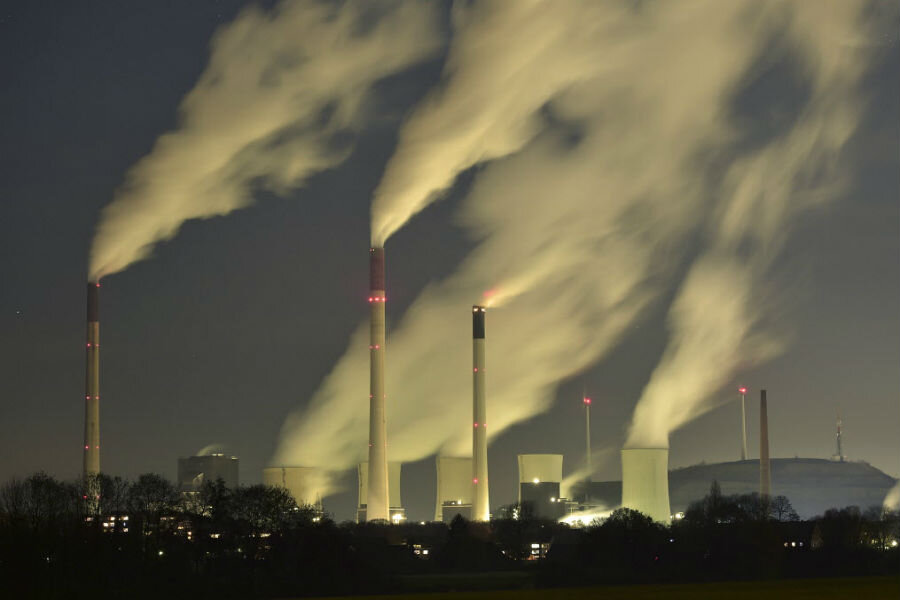Earth CO2 levels: Have we crossed a point of no return?
Loading...
Earth may have passed a significant symbolic threshold as the global climate continues to grow warmer.
Usually, September marks a low in the amount of carbon dioxide (CO2) in the atmosphere. This concentration sets the bar over which levels of the greenhouse gas will fluctuate throughout the next year. But this September, CO2 levels are staying high, at around 400 parts per million, and many scientists think that we will not see levels of the greenhouse gas drop below that threshold within our lifetimes.
Earth has been steadily building up CO2 in the atmosphere since the Industrial Revolution, but the 400 ppm landmark is creating a new normal that hasn't been seen on this planet for millions of years.
"The last time our planet saw 400 ppm carbon dioxide in our atmosphere was about 3.5 million years ago, and global climate was distinctly different than today," David Black, associate professor in the School of Marine and Atmospheric Sciences at Stony Brook University in New York, tells The Christian Science Monitor in an email.
"In particular, the Arctic (north of 60°) was substantially warmer than present, and global sea level was anywhere between 15 and 90 feet higher than today," Professor Black says.
"It took millions of years for the atmosphere to reach 400 ppm CO2 back then, and it took millions of years for the atmospheric CO2 to drop to 280 ppm right before the industrial revolution. One of the things that really concerns climate scientists is we as humans have taken only a few centuries to do what nature took millions of years, and most of that change was just in the last 50-60 years."
While global concentrations have spiked above the 400 ppm level for several years, the summer growing season has always absorbed enough atmospheric CO2 through photosynthesis to keep concentrations below that mark for the bulk of the year.
As human activities – mainly the burning of fossil fuels – have flooded more CO2 into the atmosphere, however, the annual low point has inched closer and closer to that 400 ppm mark. This year, scientists fear that the planet may have reached a point of no return.
"Is it possible that October 2016 will yield a lower monthly value than September and dip below 400 ppm? Almost impossible," wrote Ralph Keeling, director of the program at Scripps Institution of Oceanography, in a blog post last week.
While CO2 levels have dipped below the previous September's benchmark in the past, such an occurrence is rare. Even if the world stopped producing carbon dioxide completely tomorrow, the gas would likely linger above the 400 ppm mark for years, scientists say.
"At best (in that scenario), one might expect a balance in the near term and so CO2 levels probably wouldn't change much — but would start to fall off in a decade or so," Gavin Schmidt, NASA’s chief climate scientist, told Climate Central. "In my opinion, we won’t ever see a month below 400 ppm."
While the increase of CO2 in the atmosphere is cause for concern, it should be noted that the 400 ppm mark itself is more of a waypoint, rather than a hard line spelling doom for the global climate.
"It's a round number that people recognize," says Damon Matthews, environment professor at Concordia University in Montreal. "Also symbolic is that, in parallel with this increase in CO2, global temperatures have exceeded one degree above pre-industrial temperatures."
While these milestones are largely symbolic, they represent tangible illustrations of the trajectory the Earth's climate is following.
"The CO2 concentration level is somewhat reversible," due to plants' absorption of carbon dioxide, says Dr. Matthews. "The temperature that has resulted from that change is not reversible in the absence of direct human efforts."
In addition to contributing to global warming as a greenhouse gas, carbon dioxide also negatively effects the health of the Earth's oceans through acidification. As large amounts of carbon dioxide dissolve in water, some of it is converted into carbonic acid, which interacts with other water molecules to produce hydrogen ions, decreasing the pH of the ocean. The acidity of low-pH ocean water leads to coral bleaching and interference in the life cycle of smaller organisms, which also negatively impacts larger organisms farther up on the food chain.
News of the 400 ppm threshold comes as world leaders are making progress towards ratification of the Paris Agreement on climate change, which aims to systematically reduce carbon emissions worldwide starting in 2020.
The ratifiers have their work cut out for them.
"To reduce CO2 levels in the atmosphere on time scales of a few centuries, we need to not only use and develop energy resources that are less carbon-dependent, but we will also need to physically/chemically/biologically remove CO2 from the atmosphere," says Black. "The techniques to remove atmospheric CO2 exist, but are not yet practical for the scale of the problem."






